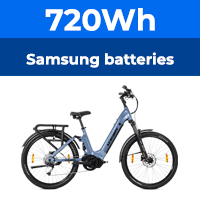The CC-CV behaviour is automatic, but entirely dependent on the accuracy and reliability of the device providing the 42V.The device can only supply its maximum current, which is the CC, and it is calibrated/set to 42V, which is the CV. If it fails, or if it is a more than 42V supply, your BMS is the only other safeguard against a battery disaster.
Your 100Ah 12V if run from full to flat is only 1200Wh, and allowing for 80% charger efficiency only gives 960Wh to the battery, and allowing for lead-acid hating being taken below 50% state of charge, really only 480Wh. Just not big enough for charging once you are parked up.
Two off-grid-van solutions: charge only whilst driving, AND get a minimum 4A charger otherwise you will always be driving, and solar. As
@cyclebuddy says, cafes etc are the not quite off grid easier option.
Depending on the weather, each 100W of good solar will give between 100Wh and 700Wh per day, and through a boost charge controller like Elejoy MU400SP (about £30) 90% or so efficiency to the battery. More efficient that way than via your lead acid battery then charger.
My average solar harvest in UK conditions in the middle 4 months of the year (June 21 +/- 2 months) is around 300Wh per 100W, and I tow three 110Wp panels and ride every day.
If you consider solar, don't buy cheap 'semi-flexible' panels. They are prone to invisibly cracked cells which reduce output to almost nothing. SunPower cells only, and SunPower panels using their own cells are as good as you can easily get.
Often larger vans use normal rooftop panels which cost almost nothing these days, but are a lot heavier and not good for aerodynamics.
Permanently outdoors roof mounted panels are always working, so far better than something that is transported inside and only set up when parked.









